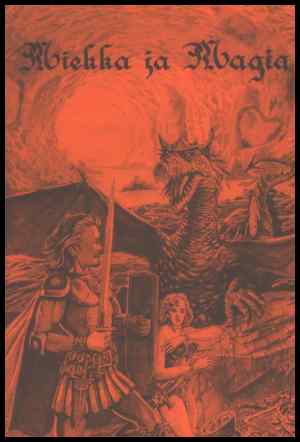I started to feel that I didn’t know roleplaying games well enough so I came up with the plan to read a roleplaying game corebook for every year they have been published. Selection criteria is whatever I find interesting.

The first Finnish roleplaying game is The Secret Treasure of Raguoc in the Acirema Dungeons, published in 1986. Miekka ja magia (Sword & Sorcery) is the second one, out in 1987, and the first to enjoy commercial release. Both were designed by Risto J. Hieta, one of the most prolific roleplaying game designers in Finland. Interestingly, the illustrations were made by Tuomas Pirinen, who later gained fame and glory at Games Workshop designing Mordheim and the 6th edition of Warhammer Fantasy Battle.
Miekka ja magia is a 60-page leaflet, an introductory fantasy game in which you make up characters and go explore a dungeon with them. You haul away treasure, gain levels and try to survive.
This is the third introductory fantasy roleplaying game I read in a row. 1985 was Dragonroar, and in 1986 Tunnels and Trolls. However, despite its modest production values, Miekka ja magia is easiest to grasp and feels most playable. Reading the book, you understand how it’s supposed to be played, not a given in the world of roleplaying games. Even introductory ones.
The mechanics of the game follow the same familiar template of D&D-lite and might be called OSR-style today. Both the Game Master and the ultimate bad guy in the dungeons is called Raguoc, but despite this, the GM is not really playing against the players.
At the end of the dungeon, you can even find the treasure of Raguoc and haul it away!
One of the more unique character classes is that of the cherub. A wizard type, the cherub has the ability to turn insubstantial. In this form, they can’t attack but also can’t be damaged and can still cast support spells.
The best thing about Miekka ja magia is the approachable, conversational tone it’s written in. Reading it feels like having a friend explain how it all works. It doesn’t assume you’re steeped in existing play culture but starts with first principles. For this reason, it’s also easy to grasp by a reader decades later.